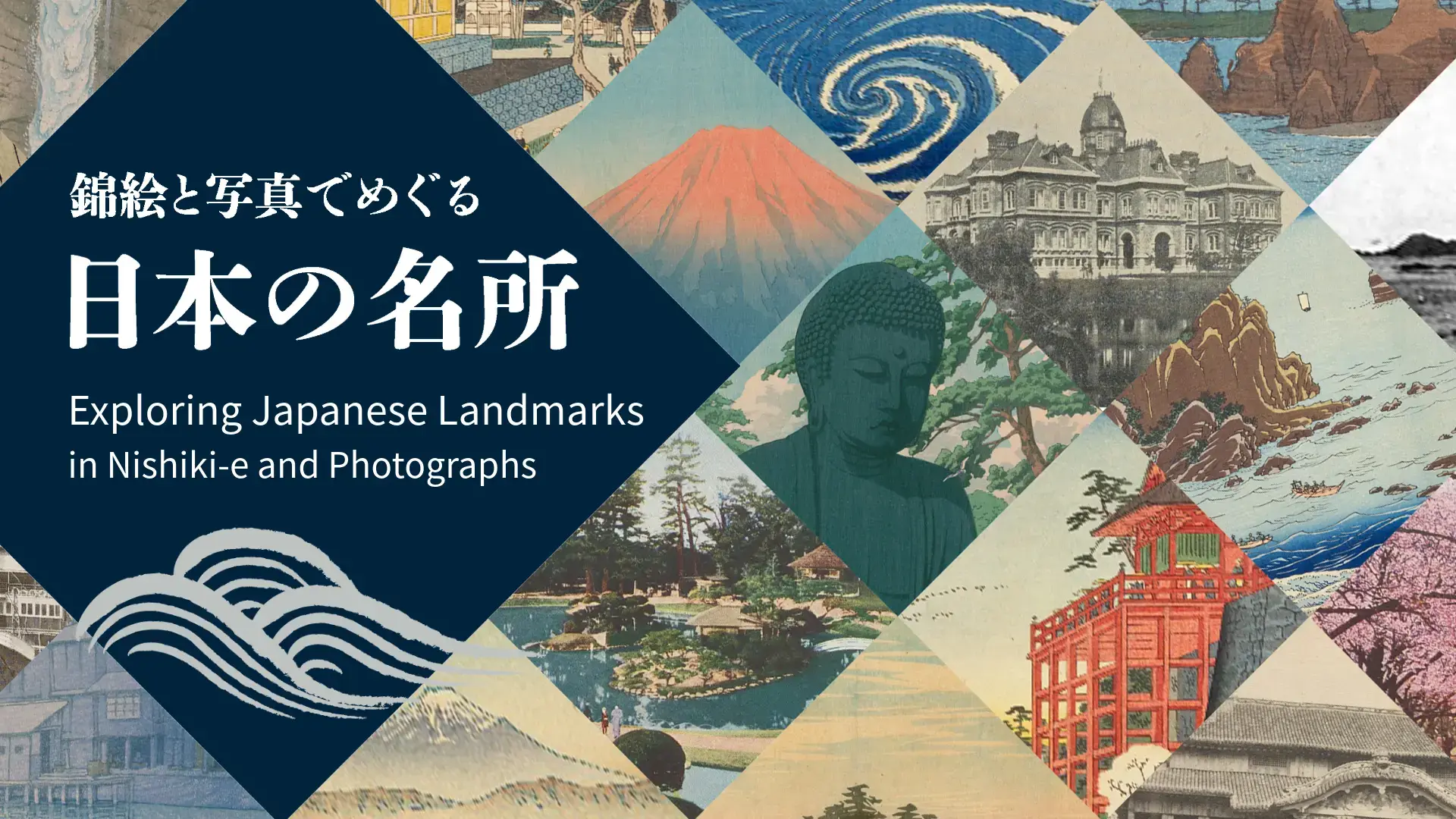
鹿鳴館以前
このコラムは、平成19年に電子展示会「写真の中の明治・大正」の中で公開したコラムを移行したものです。内容は当時の記載内容に基づきます。
山下門、幸橋門の内側にあたる千代田区内幸町一丁目は、帝国ホテル、大和生命本社、NTT日比谷ビル、同霞ヶ関ビル、みずほ銀行本店、東京電力本店等が林立するビジネス街である。江戸時代には大名屋敷地であり、その一つの島津藩邸の跡に鹿鳴館が開館し、明治27(1894)年には華族会館に払い下げられたことはよく知られている。
鹿鳴館開館以前、ここに、山下門内博物館があった。
山下門内博物館は、博覧会事務局に始まる。博覧会事務局は、明治5(1872)年2月、太政官正院に設置された。翌年ウィーンで開催される万国博覧会への参加準備のためである。博覧会事務局は、6(1873)年3月に文部省博物館、書籍館、博物局及び小石川植物園を合併した。ウィーン万国博覧会の残務が完了した8(1875)年2月、合併は解除され、博覧会事務局は内務省へ移管、3月に「博物館」と改称された。経緯は、『文部省博物局・博覧会事務局記録.明治5-8年』 に詳しい。山下門内の島津藩邸跡等の敷地16,935坪に、6棟の陳列場、動物飼養所・熊室・動物細工所(剥製などを作製)、植物分科園・植物寒中置場等の施設を擁する山下門内博物館の始まりである。
博物館発足直後、8(1875)年7月の博物館への天皇・皇后による行幸啓の記録がある。「午前九字御出門博物館表門ヨリ入御御馬車古物館前マテ」、これから御歩行にて、第一試業場(農業試験場)の「英国竜動府キャロック氏家園ノ模築園庭」、「澳国植物家ホイブレング氏発明樹芸法」を御覧の上、御休息。「有用掛並木ノ道筋」(雨天の際は、動物館植物館通御)より「墺国持帰之品」を御覧になる。続いて、第四列品所(農業・山林関係)、第五第六列品所(工業・美術・学校関係、ウィーン万国博覧会受賞の献納品)へ。午後は、第二試業場(製糸技術館)から、第七試業場までの技術(塗物・製紙・画図・度量具・製鉄具・玉磨・陶製品・石羔粉細工夫、染物)を御覧になって、時間があれば、動物・植物・鉱物の陳列場および古物館を御覧になる予定とされている。一日がかりの行幸啓、山下門内博物館の規模の広さがうかがわれる。
『懐中東京案内』 という当時のガイドブックを見てみよう。そこには「凡そ世界万国の珍物数万種を集め館内に羅列して平民男女に至るまで切手を売て見るを許るさる」とあり、入館料は二銭となっている。
この頃の飼育動物の一覧がある。『上野動物園百年史』13-15頁に掲載の「明治8年3月圏養動物表」である。内務省への移管のために作成された書類であろう。「圏養動物表」に挙げられている動物名は、獼猴(さる)、猫、ヤマネコ、狐、犬、熊、狸、オットセイ、野猪、鹿、水牛、鼯鼠(ももんが)、ヤマ子、仏種兎、熟兎、鷲、シマトビ、シマミミズク、白烏、茶褐烏、鴝鵒(きゅうかんちょう)、雉、孔雀、鴿(はと)、鷦鷯(みそさざい)、亀、鯢魚(さんしょううお)、蜜蜂、蝸牛。他に名はないが「諸畜入用」とある。水牛の子は、前年の7年9月23日、「局ニテ出生」とある。「合計30種70点と1群」の動物がいたという。動物飼養所は、明治6(1873)年から9(1876)年において70坪の規模であった。小動物は屋内で飼育したとしても、オットセイ、野猪、鹿、水牛は、どこで養っていたのだろうか。屋外であろうか。
植物園を中心とする、発足直後の博物館の記録として、『公私雑記』という資料がある。内務省十等出仕博物館掛となった小野職愨(おのもとよし)による、明治7(1874)年11月から翌年5月にかけての業務日記である。植物園は、植物分科園に加えて、およそ577坪18区に645品の植物を植付ける有用植物園が、7年7月に企画されている。これを裏付けるように、『公私雑記』中にも、200件を超える植物について、下種・写真(スケッチ)・植付け・鑑定、採集行の記録がある。植物の記録のほか「渋谷市三郎/葡萄園より保字小判一枚ヲ堀出ス」(8年3月18日補記)などという記事が目を引く。「葡萄園」は分科園の一部か、小判が出るような屋敷跡を彷彿とさせる記事である。「此日門前溝沼中ニテ、ヲナカカモ・アカヽシラ・マガモ等七匹ヲ捕フ」(8年3月19日)という記事もある。門前とは東門のことか。博物館門前にカモの寄る沼があったのだ。
以後、内務省博物館は、博物局と名を改めるなど行政組織としては変遷があったが、施設は、陳列場は2棟増え、第11列品所まで増設される。14(1881)年4月には、新設の農商務省所管となり、同年10月の博物局の上野移転まで、山下門内博物館は存続する。1号陳列場の跡に鹿鳴館が開館するのは、16(1882)年11月である。
千代田区内幸町一丁目界隈を歩いてみよう。大和生命本社の敷地内に「鹿鳴館跡」碑がある。舞踏会に思いを馳せた後、熊やオットセイの声に耳を澄ませてみるのも悪くないであろう。
引用・参考文献
- 『上野動物園百年史 本編・資料編』東京都恩賜上野動物園,1982, 2冊 【RA12-21】
- 『東京国立博物館百年史』東京国立博物館,1973, 2冊 【UA31-17】
- 錦[カ]翁[著],圭介文書研究会編『錦[カ]翁日記.明治9年8月-12月』名古屋市東山植物園,2006 【GK65-H50】
- 椎名仙卓『日本博物館成立史:博覧会から博物館へ』雄山閣,2005 【UA31-H107】
- 関秀夫『博物館の誕生 町田久成と東京帝室博物館』岩波書店,2005 【UA31-H108】
- 小野職愨『公私雑記 明治7年11月5日-8年5月20日』【849-22】



